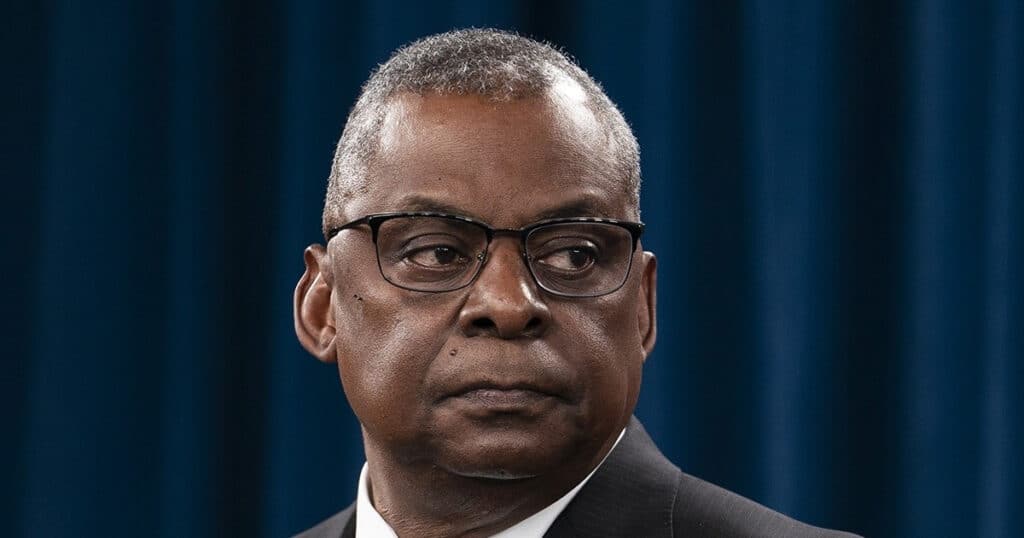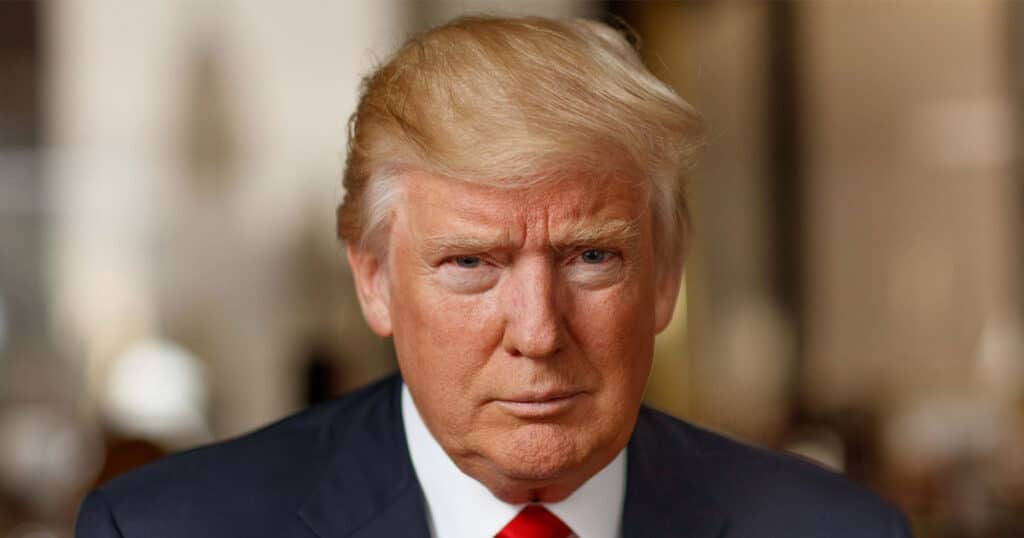
Directive Shows Why White House Should Have Known SecDef Austin’s Whereabouts
The Pentagon’s Joint Chiefs of Staff explicitly laid out longstanding procedures for the White House to know the location of the secretary of defense and the nation’s other military leaders at all times.
It’s a policy that apparently wasn’t followed when Defense Secretary Lloyd Austin was absent during his hospitalization at Walter Reed National Military Medical Center outside Washington, D.C., for three days without President Joe Biden knowing he was sidelined.
The directive from the Office of the Chairman of the Joint Chiefs is titled “Key Personnel Location Reports to the National Military Command Center,” or NMCC. The directive was issued Aug. 23, 2016, toward the end of the Obama administration, and was current as of Dec. 15, 2021, during the first year of the Biden administration.
“The NMCC maintains access to continuous location data (e.g., normal duty location or trip itinerary) on the following,” the directive says, referencing first, “Office of the Secretary of Defense (OSD), Service, and Combatant Command key personnel as reported by the principals or their representatives: (1) Office of the Secretary of Defense (OSD) (a) Secretary of Defense.”
The directive goes on to list other Defense Department and military officials.
The 2016 directive is an updated version of a near-identical directive issued Dec. 17, 2013. Its “summary of changes” includes a “web-based” system to track personnel.
The reason for the system? “Provides for a web-based central location for key personnel or designated representatives to update, travel and contact information enabling near real-time information and distributed access,” the directive states.
The directive, which is somewhat obliquely worded, also provides for location data to be available for officials in the presidential line of succession. The defense secretary is sixth in line, behind the vice president, House speaker, Senate president pro tempore, secretary of state, and treasury secretary.
“The NMCC has access to location data on the following presidential successors and other key Office of Secretary of Defense (OSD) personnel, as reported by their representatives,” the directive says.
It says these representatives have access to the White House switchboard and the Federal Emergency Management Agency “on the Congressional/Executive Schedule Tracking and Reporting System on Secret Internet Protocol Router Network (SIPRNET) maintain continuous location data.”
Presuming this procedure is still in place, it appears that either Austin deliberately kept information on his whereabouts from the White House or the White House isn’t being forthcoming with the public about what the president knew, said Victoria Coates, vice president for national security and foreign policy at The Heritage Foundation.
“The secretary of defense is a vital part of our chain of command. At any point, if this process were still in place, but even if it weren’t, his Secret Service detail could have placed a secure call to the Situation Room and updated them to the SecDef’s location,” Coates told The Daily Signal, which is Heritage’s news outlet.
“So, there had to have been a proactive direction from the [defense] secretary that that communication not take place,” said Coates, who was the White House’s deputy national security adviser during the Trump administration and research director for Defense Secretary Donald Rumsfeld during the George W. Bush administration.
“For the president to accept that as OK, and not even a public reprimand, shows the degree to which these processes are being disregarded in this White House,” she said.
The Office of the Secretary of Defense acknowledged The Daily Signal’s inquiry about the existing directive Thursday, but on Friday asked for more time to respond. A Defense Department spokesperson, however, didn’t provide comments before publication Friday.
A spokesperson for the White House National Security Council referred The Daily Signal to the Joint Chiefs, where the public affairs office didn’t respond to The Daily Signal’s inquiries Thursday or Friday.
The NSC spokesperson did, however, refer to previous public comments from NSC Coordinator for Strategic Communications John Kirby, a retired Navy rear admiral who often briefs reporters on camera.
“There’s a process … for the Situation Room, the Ops Center, to check in every morning to get the general location of all the non-White House principals, the Cabinet officers. And there is a process of connection to the agencies to do that. But it’s generic,” Kirby told reporters Jan. 8.
When Austin was admitted Jan. 1 to Walter Reed for treatment of complications after surgery Dec. 22 for prostate cancer, his personal security detail was with him but no call was made to alert the White House or key Pentagon staff. On Jan. 4, White House national security adviser Jake Sullivan was notified of Austin’s hospitalization, and he notified Biden, according to a timeline assembled by The Associated Press.
“It’s what town they’re in—D.C., if they’re overseas, where they are. That’s the process,” Kirby also told reporters Jan. 8. “The issue of when a Cabinet official gets hospitalized, that’s really on the agency to inform [the White House] that that has happened.”
Kirby said Cabinet officials aren’t tracked “like they’re a poodle,” when answering more questions from reporters at a Jan. 11 briefing about why the White House couldn’t locate Austin through cellphone data.
“Let me stop you right there,” Kirby told the reporter. “We’re not going to track the GPS coordinates on somebody’s mobile phone in the administration, and we’re not going to plant a microchip in their neck like they’re a poodle. They check in every day. And we know where they are.”


